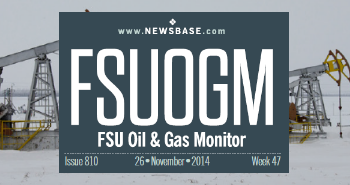What is the outlook for Russian oil output this year?
_0.jpeg)
OPEC has maintained its forecast for Russian oil production this year at 10.28mn barrels per day in its latest monthly report, despite the government’s recently announced plan to curtail exports by 500,000 bpd in August. The International Energy Agency (IEA) likewise estimates that there will not be a significant impact on the country’s output as a result of the cut, and in its report even raised its projection for the current year by 70,000 bpd to 10.87mn bpd.
According to OPEC, Russian oil output will fall by 750,000 bpd in 2023, or 6.8%. The IEA, on the other hand, projects a decline of only 220,000 bpd, or 2%. The latter has also raised its forecast for Russian oil production in 2024 by 150,000 bpd to 10.75mn bpd, although this will still represent a decline of 120,000 bpd year on year, or 1.1%.
Neither organisation provides explanations for its forecasts. But it would appear they are bullish on domestic oil consumption in Russia compensating for weaker oil exports. OPEC and IEA have broadly the same estimates for Russian output in 2022 – 11.03mn bpd and 11.09mn bpd respectively. Russia itself no longer publishes its data.
While Russian oil exports initially remained robust in the face of an EU embargo on its supplies, the government announced in March it would be cutting production by 500,000 bpd, excluding condensate, versus the level in February, and then extended the cut until July and later until the end of the year. Deputy Prime Minister Alexander Novak announced at the end of April that the targeted reduction had been achieved. Then in early July, Novak announced that Russia would voluntarily cut its exports by 500,000 bpd in August, “as part of efforts to ensure market balance.” The minister’s office later confirmed that Russia would be reducing production by the same amount, adding to the 500,000 bpd cut it had announced earlier.
Notably, both OPEC and the IEA have higher forecasts for Russian output this year than the Russian government. Novak forecast at the end of April that oil production would fall to 515mn tonnes (10.34mn bpd) in 2023, representing a 3.7% decline y/y. On July 13 the minister confirmed this was still the projection.
Russian oil producers “will decide for themselves how they will act: either they will reduce exports or reduce production,” the minister said. “But in general, the task is to reduce supplies to world markets.”
It is very hard to forecast how Russian oil production will fare this year, not least because of the lack of government data. A lot will also depend on how quickly producers can implement the cuts. After all, it took them almost two months to comply with the 500,000 bpd cut announced starting in March.
Another factor will be OPEC+ policy going forward. Key representatives of the cartel will meet once more in August to discuss policy, potentially offering some clarity. But cuts could be scaled back or expanded, depending on the evolving outlook for demand, particularly in China and other key markets. There are expectations of a post-lockdown surge in energy demand in China, but equally there are global concerns of the onset of a recession, which would dampen demand.
Then there is also domestic oil consumption in Russia to consider. Domestic fuel prices have soared in recent months, indicating a shortage. The government will be keen to suppress this increase by encouraging refiners to release more supply onto the market, to avoid inflation and rising public energy bills. On July 13, the cost of AI-92 grade gasoline at the St Petersburg International Mercantile Exchange (SPIMEX) hit a record high of RUB60,253 ($658) per tonne. The price of AI-95 also reached a new height of RUB67,385 per tonne on July 15.
Another factor will be how quickly Europe reduces the remaining oil supply it gets from Russia. As recently as April, the EU was still importing 0.6mn bpd from the country. The majority of that supply went to Hungary, Slovakia and the Czech Republic, who are anxious not to phase out deliveries too quickly through fear of fuel scarcity, although they face pressure from Brussels to do more.
What is clear is that Western efforts to stem the flow of Russian oil to international markets have largely failed, with most of the supply that previously went to Europe now bound for China and India. And India for one is now processing that crude into refined products that it delivers to the EU in record volume, undermining the goal of the sanctions.
The greater impact on Russian oil output will be felt in the longer term, however. Russian oil producers now have significantly fewer options for raising capital for new projects, and while Russian dependence on Western services, expertise and technology that it has now lost should not be overstated, there will nevertheless be implications for some of the country’s more challenging projects, which it will rely increasingly on over the coming years to sustain and grow oil production.



Follow us online